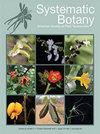Revisiting Metternichia (Solanaceae) Through an Integrative Approach: A Monotypic Genus?
IF 0.8
3区 生物学
Q4 EVOLUTIONARY BIOLOGY
引用次数: 0
Abstract
Abstract— Improving species delimitation and knowledge on species complexes is crucial for many areas of study in Biology, especially conservation. Integrative taxonomy contributes to this topic by using different approaches to better delineate taxonomic boundaries. Metternichia (Solanaceae), historically a monospecific genus, has a geographic range that comprises contrasting environments. Metternichia principis was described as having two varieties: the typical variety, found in the humid forests of eastern Brazil (Atlantic Forest region), and M. principis var. macrocalyx , which presents a larger calyx and inhabits mostly semi-arid areas (Caatinga region). In this study, we tested the validity of such groups by integrating environmental, phenological, morphometric, and palynological data; applying uni- and multivariate tests; and evaluating the conservation status of each taxon. Our results support the recognition of two morphological groups within Metternichia , largely in agreement with the original circumscription of the varieties. Multivariate analyses clearly indicate different ecological niches, with each taxon inhabiting environments with distinct mean annual precipitation and temperature. Phenological data show some differences between the varieties regarding months with the highest number of flowering and fruiting records. In general, M. principis var. macrocalyx presents larger flower and pollen characters, and smaller fruit characters compared to the typical variety. Based on these findings, we elevate the variety to the status of species, as the new combination Metternichia macrocalyx . Following IUCN guidelines, both taxa are here preliminarily considered endangered (EN).从综合的角度重新审视茄科梅特尼属:一个单型属?
摘要:提高物种划分和物种复合体的知识对生物学的许多领域,特别是保护研究至关重要。综合分类学通过使用不同的方法来更好地划定分类学界限,从而有助于这一主题。Metternichia(茄科),历史上是一个单种属,其地理范围包括不同的环境。原理美特尼hia principis被描述为有两个品种:典型的品种,发现于巴西东部潮湿的森林(大西洋林区),和原理美特尼hia var. macrocalyx,具有较大的花萼,主要生活在半干旱地区(Caatinga地区)。在这项研究中,我们通过综合环境、物候、形态计量和孢粉学数据来检验这些类群的有效性;应用单检验和多变量检验;并对各分类单元的保护状况进行评价。我们的研究结果支持在梅特尼亚属中识别两个形态群,在很大程度上与品种的原始界限一致。多变量分析表明不同的生态位不同,各分类单元所处的环境具有不同的年平均降水量和温度。物候资料显示,不同品种在开花和结果最多的月份存在一定差异。总体而言,与典型品种相比,大萼花的花和花粉特征较大,果实特征较小。基于这些发现,我们将该品种提升到种的地位,作为新组合大萼梅特尼亚。根据世界自然保护联盟的指导方针,这两个分类群在这里被初步认为是濒危物种。
本文章由计算机程序翻译,如有差异,请以英文原文为准。
求助全文
约1分钟内获得全文
求助全文
来源期刊

Systematic Botany
生物-进化生物学
CiteScore
1.80
自引率
10.00%
发文量
72
审稿时长
6-12 weeks
期刊介绍:
Systematic Botany Monographs is a series of peer-reviewed taxonomic monographs and revisions published the American Society of Plant Taxonomists. ISSN 0737-8211, ISBN prefix 978-0-912861. No; volumes of Systematic Botany Monographs must be ordered separately. ASPT membership inludes only a subscription to the quarterly journal Systematic Botany. SBM is supported by sales, author"s subsidies, and donations.
 求助内容:
求助内容: 应助结果提醒方式:
应助结果提醒方式:


